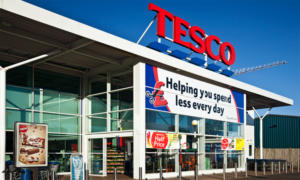
Dans le paysage de plus en plus complexe de la vente au détail, caractérisé par la convergence du commerce physique et numérique et les attentes croissantes des consommateurs, les étiquettes électroniques de rayon (ESL) sont apparues comme un instrument essentiel pour la modernisation des expériences en magasin. Pour les directeurs marketing (CMO), il est essentiel de saisir la valeur stratégique des ESL pour améliorer l’expérience des clients, optimiser les stratégies marketing et accroître la rentabilité. Ce guide complet explore le potentiel de transformation des ASP, en s’appuyant sur des données empiriques, des études de cas réels et des informations sur le marché.
Que sont les ASP et comment fonctionnent-elles ?
Les étiquettes électroniques de rayon sont des dispositifs numériques qui remplacent les étiquettes de prix traditionnelles sur papier, en tirant parti de la technologie sans fil pour afficher des informations telles que les prix, les promotions, les spécifications des produits et même des codes QR qui se connectent à du contenu en ligne. Ces étiquettes sont intégrées à un système de tarification centralisé, qui permet des mises à jour en temps réel, garantissant ainsi la précision et améliorant considérablement l’efficacité par rapport aux processus manuels sur papier du passé.
Les ESL utilisent généralement la technologie e-ink, semblable à celle utilisée dans les e-readers, qui offre une excellente lisibilité tout en maintenant une faible consommation d’énergie. Les ESL sont connectés via des réseaux Bluetooth, WiFi ou propriétaires à faible consommation d’énergie, ce qui permet un contrôle centralisé facilitant les changements à l’échelle du magasin en quelques secondes plutôt qu’en quelques jours.
Les avantages stratégiques des ASP pour les détaillants
Les avantages des ASP vont bien au-delà de la commodité opérationnelle ; ils ont un impact fondamental sur la perception des clients, la gestion des stocks et la précision des prix. Les sections suivantes examinent ces avantages plus en détail.
1. Capacités de tarification dynamique

L’un des principaux avantages des ESL est leur capacité à prendre en charge la tarification dynamique. Les détaillants peuvent ajuster les prix en temps réel pour répondre aux conditions du marché, gérer les stocks ou adopter des stratégies de prix compétitives pendant les périodes de forte demande. Selon un rapport de Gartnerles stratégies de tarification dynamique peuvent accroître la rentabilité de 2-5% lorsqu’elles sont mises en œuvre de manière efficace (Gartner, 2022). Les ASP facilitent ces ajustements de manière transparente, éliminant ainsi l’erreur humaine, garantissant la cohérence des prix et favorisant la confiance des consommateurs.
Au cours de la pandémie de COVID-19, les détaillants utilisant les ASP ont démontré leur capacité à s’adapter aux fluctuations de la chaîne d’approvisionnement et aux consommateurs sensibles aux prix plus efficacement que leurs concurrents qui se contentent d’ajuster manuellement leurs prix.
2. Réduction des coûts de main-d’œuvre
Le processus manuel de mise à jour des étiquettes de prix en papier est à la fois laborieux et inefficace. Le personnel des magasins consacre un temps considérable à cette tâche, ce qui l’empêche de se concentrer sur des activités à plus forte valeur ajoutée telles que le service à la clientèle et la gestion des stocks. Une étude réalisée par Retail Systems Research a révélé que les magasins employant des ASP ont réalisé une réduction de 30 % des coûts de main-d’œuvre. 30 % de réduction des coûts de main-d’œuvre liés à la mise à jour des prix (Retail Systems Research, 2021). Pour un détaillant de taille moyenne gérant plus de 5 000 UGS, cette réduction équivaut à des milliers d’heures économisées chaque année, ce qui se traduit par d’importantes économies.
Par exemple, une chaîne européenne de supermarchés a déclaré avoir économisé près de 500 000 dollars par an en coûts de main-d’œuvre après avoir adopté la technologie ESL , ce qui a permis au personnel de se concentrer sur l’amélioration de l’expérience client.
3. Améliorer l’expérience des clients

Les consommateurs modernes exigent précision et transparence en matière de prix. Une enquête menée par PwC indique que 65 % des acheteurs sont moins enclins à faire confiance à un détaillant s’ils constatent des différences entre les prix en rayon et les prix à la caisse (PwC, 2020). Les ASP garantissent une tarification cohérente et en temps réel sur tous les canaux, ce qui permet d’atténuer les erreurs et d’améliorer la transparence.
En outre, les ESL peuvent afficher des messages promotionnels, des niveaux de stock et des informations détaillées sur les produits, améliorant ainsi l’expérience globale du client. En incorporant des codes QR dans les ESL, les détaillants peuvent fournir des informations supplémentaires sur les produits, telles que la provenance ou les données nutritionnelles, comblant ainsi le fossé entre les environnements de vente au détail physiques et numériques.
4. Efficacité environnementale et économique
L’impact environnemental du passage des étiquettes en papier aux étiquettes électroniques est considérable. Le secteur de la vente au détail consomme chaque année des milliards d’étiquettes en papier, ce qui contribue de manière significative aux déchets environnementaux. Les ESL, qui peuvent rester opérationnels jusqu’à 10 ansréduisent considérablement les besoins en papier, ce qui va dans le sens des objectifs de développement durable des entreprises. Selon Carbon Trustles détaillants qui adoptent les étiquettes électroniques peuvent réduire les émissions de CO2 liées à l’étiquetage de 60% (Carbon Trust, 2021).
5. Améliorer l’efficacité de la promotion
Les prix promotionnels sont une pierre angulaire de la stratégie marketing des détaillants, et les ASP facilitent l’exécution rationalisée de ces campagnes. Les détaillants peuvent mettre en œuvre des ventes flash sans avoir à relever les défis logistiques liés aux systèmes papier. Des études montrent que les détaillants qui utilisent des stratégies promotionnelles basées sur le site ESL ont observé une augmentation du volume des ventes de 12 % d’augmentation du volume des ventes pendant les périodes de promotion par rapport à ceux qui utilisent l’étiquetage manuel (NielsenIQ, 2023).
Un exemple pertinent est celui d’un détaillant japonais de produits électroniques qui a eu recours à l’anglais langue seconde pour des remises ponctuelles, ce qui s’est traduit par une augmentation de 15 % des taux de conversion. 15 % des taux de conversion, grâce à la perception de l’urgence et de l’exclusivité.Le taux de conversion a augmenté de 15 %, grâce à la perception de l’urgence et de l’exclusivité.
Études de cas réels : Évaluer l’impact de ESL
1. Carrefour France : Améliorer la précision des prix

Carrefour, l’une des principales chaînes européennes de supermarchés, a mis en place des ALS dans plus de 500 de ses magasins. Avec l’introduction des ESL, Carrefour a obtenu 100 % d’exactitude des prixcontre 97 % auparavant avec les processus manuels, où l’erreur humaine conduisait souvent à une mauvaise tarification et à l’insatisfaction des consommateurs.
En outre, Carrefour s’est appuyé sur les ASP pour mettre en place une tarification dynamique des produits frais, en ajustant les prix plusieurs fois par jour afin de minimiser le gaspillage et de maximiser les profits. En conséquence, Carrefour a réduit les déchets alimentaires de 7% dès la première année, améliorant ainsi le développement durable et les performances financières.
2. Tesco : Efficacité de la main-d’œuvre et amélioration de l’engagement des clients

Tesco, le plus grand détaillant du Royaume-Uni, a introduit les ESL dans ses magasins de proximité urbains, réalisant ainsi des économies de main-d’œuvre équivalant à 40 000 heures par an dans 100 magasins. Le personnel a ainsi pu se concentrer sur la fourniture d’un service clientèle de qualité supérieure.
Tesco a également intégré des codes QR dans les ESL, offrant aux acheteurs des informations supplémentaires telles que des recettes et des bons de réduction numériques. Cette initiative a entraîné une 20 % d’augmentation de l’interaction des consommateurs avec le contenu numérique, ce qui a eu pour effet de stimuler la participation au programme de fidélisation et les ventes inter-catégories.
3. MediaMarkt Allemagne : Permettre la cohérence omnicanale

MediaMarkt, un important détaillant allemand de produits électroniques, a dû relever des défis importants pour assurer la cohérence des prix entre ses canaux en ligne et physiques. La mise en œuvre de ESL a permis de synchroniser les prix et d’offrir une expérience omnicanale cohérente. En conséquence, le taux de conversion omnicanal de MediaMarkt s’est amélioré de 18%Le taux de conversion omnicanal de MediaMarkt s’est donc amélioré de 18 %, car les clients n’ont plus eu à subir de différences entre les prix pratiqués en magasin et en ligne.
En outre, MediaMarkt a utilisé les ESL pour afficher la disponibilité des stocks en temps réel, ce qui a permis de réduire les demandes de renseignements des clients de 25% et en améliorant l’efficacité opérationnelle en magasin.
Répondre aux préoccupations communes concernant la mise en œuvre de ESL
1. Dépenses initiales d’investissement
L’une des principales préoccupations des détaillants est le coût initial associé au déploiement de la technologie ESL . Si l’investissement initial peut sembler considérable, il est essentiel d’évaluer les avantages financiers à long terme découlant de la réduction de la main-d’œuvre, de la diminution de l’utilisation du papier et de la minimisation des inexactitudes de prix. Selon McKinsey & Companyles ESL offrent généralement un retour sur investissement (ROI) dans un délai de 18 à 24 mois pour la plupart des détaillants (McKinsey, 2022).
Un détaillant de taille moyenne gérant 10 000 unités de stock devra généralement investir entre 100 000 et 150 000 euros. $100,000-$150,000 pour un déploiement complet sur ESL . Cependant, les économies annuelles résultant de l’amélioration de l’efficacité de la main-d’œuvre, de la réduction des coûts des matériaux et de l’amélioration des résultats promotionnels garantissent souvent un retour sur investissement complet en deux ans.
2. Intégration avec les systèmes existants
Il est essentiel de réussir l’intégration des LEF dans les systèmes de point de vente (POS) et d’inventaire existants. De nombreux fournisseurs de ESL proposent des solutions API adaptables qui s’intègrent aux plates-formes logicielles de vente au détail les plus couramment utilisées. Les détaillants signalent que 85 % des mises en œuvre de ESL s’intègrent parfaitement lorsqu’elles sont facilitées par des fournisseurs expérimentés de ESL (Retail Technology Insights, 2023).
3. Consommation d’énergie et exigences en matière d’entretien
Les ESL sont conçues pour être efficaces sur le plan énergétique, avec une durée de vie typique de 5 à 10 ans par batterie. La technologie e-ink sous-jacente ne consomme de l’énergie que lors des mises à jour du contenu, ce qui rend les ESL exceptionnellement économes en énergie. La maintenance se limite principalement au remplacement peu fréquent des piles, ce qui demande beaucoup moins de travail que la gestion des étiquettes en papier.
Considérations stratégiques pour les OCM
Pour les directeurs généraux de l’entreprise qui évaluent le potentiel stratégique de l’anglais langue seconde, l’impact plus large sur les stratégies de marketing et d’engagement des consommateurs doit être l’objectif principal.
1. Synchroniser les stratégies numériques et en magasin
Les ASP facilitent la synchronisation entre les stratégies de prix numériques et physiques. Étant donné que 67 % des consommateurs préfèrent vérifier les prix en ligne avant de se rendre dans un magasin (Statista, 2023), les ASP assurent la cohérence entre les prix en ligne et en magasin, ce qui renforce la confiance des consommateurs et la fiabilité de la marque.
2. Personnalisation et promotions ciblées
Les ESL permettent de personnaliser les prix au niveau des rayons. Par exemple, les membres d’un programme de fidélisation peuvent voir des prix personnalisés sur certains articles, en fonction de leur historique d’achats. Les CMO peuvent utiliser les données des clients pour créer des promotions dynamiques très ciblées qui s’affichent directement sur les ESL, améliorant ainsi la personnalisation et renforçant la fidélisation des clients.
3. La durabilité comme proposition de valeur de la marque
Les ASP contribuent de manière significative à l’image de durabilité d’un détaillant. La réduction de la consommation de papier et l’amélioration de l’efficacité énergétique correspondent à l’engagement d’une marque en matière de responsabilité environnementale. Selon un rapport de Deloitte, 59 % des consommateurs expriment une préférence pour les marques qui s’engagent dans des initiatives de développement durable (Deloitte, 2022). Les directeurs généraux de l’entreprise peuvent exploiter efficacement les ASP pour mettre en avant leur gestion de l’environnement.
Orientations futures de la technologie ESL
1. Intégration avec l’IdO et l’IA pour une adaptabilité dynamique.
L’avenir des ASP est intrinsèquement lié à l’intégration avec l’internet des objets (IoT) et l’intelligence artificielle (IA). Les systèmes avancés ESL pourraient ajuster dynamiquement les prix en fonction de facteurs en temps réel, tels que les niveaux de stock, les actions des concurrents ou même des conditions externes comme la météo. Les ASP alimentés par l’IA permettraient aux détaillants de maintenir leur compétitivité en optimisant en permanence les stratégies de tarification.
2. Communication en champ proche (NFC) et réalité augmentée (RA)
Les ESL de la prochaine génération devraient intégrer des fonctions NFC et de réalité augmentée. Les clients pourront appuyer leur smartphone sur le site ESL pour afficher des produits en réalité augmentée, visualiser des articles dans leur propre environnement ou accéder à des contenus didactiques. Ces fonctionnalités permettent d’unifier davantage l’expérience d’achat physique et numérique, en fournissant aux consommateurs des informations enrichies et en améliorant leur parcours d’achat.
3. L’analyse avancée pour une vision stratégique
Les détaillants s’appuieront de plus en plus sur les ALS pour collecter et analyser les données opérationnelles et les données d’interaction avec les consommateurs. La compréhension des changements de prix, de la fréquence des promotions et des corrélations entre les ventes permettra aux directeurs généraux de l’entreprise d’affiner les stratégies de marketing sur la base d’analyses de données solides. Les plateformes ESL actuelles fournissent déjà ces informations, ce qui ouvre la voie à des campagnes de marketing de détail davantage axées sur les données.
Conclusion : Les ASP, un impératif stratégique pour les OCM
Les étiquettes électroniques de rayon ne sont pas de simples remplacements technologiques des étiquettes de prix traditionnelles ; elles représentent un outil stratégique transformateur qui permet aux détaillants d’améliorer l’expérience du client, l’efficacité opérationnelle et les stratégies de prix dynamiques, augmentant ainsi la rentabilité. Pour les directeurs généraux de l’entreprise, il est essentiel de tirer parti de la puissance des étiquettes électroniques de gondole pour maintenir la compétitivité dans un paysage de vente au détail de plus en plus complexe.
Les avantages quantifiables – économies de main-d’œuvre, élimination des erreurs de tarification, gains environnementaux et amélioration de l’efficacité promotionnelle – font des ASP une norme incontournable pour les détaillants avant-gardistes. Des exemples concrets de Carrefour, Tesco et MediaMarkt démontrent l’impact mesurable des ASP sur la réalisation d’objectifs commerciaux clés.
Alors que les attentes des consommateurs évoluent et que les environnements de vente au détail deviennent de plus en plus sophistiqués, les ESL sont essentiels pour garantir que les expériences en magasin correspondent aux demandes des clients tout en soutenant des objectifs marketing plus larges. Le moment est venu pour les directeurs généraux d’investir dans la technologie ESL afin d’assurer la pérennité des opérations de vente au détail et de favoriser des interactions fluides et attrayantes avec les clients.
Références
- Gartner. (2022). « Stratégies de tarification dynamique : Comment utiliser l’automatisation pour augmenter les profits ».
- Recherche sur les systèmes de vente au détail. (2021). « Labor Cost Reduction in Retail with ESL Implementation » (Réduction des coûts de main-d’œuvre dans le commerce de détail avec la mise en œuvre de ).
- PwC. (2020). « Confiance des consommateurs et exactitude des prix en magasin ».
- Carbon Trust. (2021). « The Environmental Impact of Electronic Shelf Labels (L’impact environnemental des étiquettes électroniques de rayonnage).
- NielsenIQ. (2023). « Impact des promotions dynamiques sur les ventes en magasin ».
- McKinsey & Company. (2022). « Le retour sur investissement des étiquettes électroniques de rayonnage ».
- Aperçus de la technologie de la vente au détail. (2023). « Intégration réussie des ALS dans les systèmes de vente au détail ».
- Statista. (2023). « Comportement des consommateurs : Online Price Checking Before Shopping » (Comportement des consommateurs : vérification des prix en ligne avant de faire des achats).
- Deloitte. (2022). « The Rise of Sustainability in Consumer Preferences » (La montée du développement durable dans les préférences des consommateurs).
Prochaines étapes
Pour explorer les avantages que les ALS peuvent apporter à votre commerce de détail ou pour planifier une consultation, communiquez avec notre équipe dès aujourd’hui. Nous nous engageons à vous aider à transformer vos opérations en magasin et à profiter des avantages de cette technologie novatrice. Nos experts peuvent fournir une évaluation personnalisée de vos besoins et vous guider tout au long du processus de mise en œuvre, en veillant à ce que vous tiriez le meilleur parti de votre investissement dans les ALS. Laissez-nous vous aider à franchir la prochaine étape vers des opérations de vente au détail plus intelligentes et plus efficaces.




